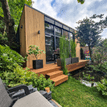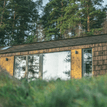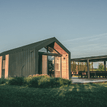Tiny House Rules and Legislation
- Home
- Tiny House Rules and Legislation
Zoning Plan
In each European country, a Bestemmingsplan (Zoning Plan) plays a significant role in land use regulations. It defines the permitted functions of specific areas, including residential zones. To ensure your Tiny House complies with regulations, it’s imperative to understand and align your project with the Bestemmingsplan.
Checking Zoning Plan Compatibility
Before selecting a location for your Tiny House, you must verify if it aligns with the Bestemmingsplan of your municipality. This ensures that the land is designated for residential use and is suitable for your Tiny House project. In the Netherlands, you can conveniently access zoning plan information using the ‘ruimtelijkeplannen.nl’ resource.

Land and Legislation for Tiny Houses
For your Tiny House project, securing land zoned for residential use is essential. The cost of land can significantly vary depending on its location and local regulations. In certain areas, land may be available for lease through erfpacht (land lease). Understanding these aspects related to land is crucial for a successful Tiny House project.
Costs and Availability of Land
The costs associated with purchasing or leasing land for your Tiny House depend on factors such as the size of the land and the region. In many municipalities, specific regulations regarding the pricing of land for Tiny Houses are yet to be established. In some cases, land is offered through erfpacht, which allows you to use the land for an extended period without owning it outright.
Rules for Building on Your Property
Building your Tiny House in your garden requires a clear understanding of the rules based on the size of your property. These regulations determine how much square footage you can add to your Tiny House based on the size of your backyard.Example* of Regulations
This is purely an example but minuciplaties can ask these kind of things- If your backyard’s building area is 100 m2 or smaller, you can add up to 50% of that area.
- For backyards with building areas between 100 m2 and 300 m2, you can add 50 m2 plus an additional 20% of the area exceeding 100 m2.
- If your backyard’s building area is larger than 300 m2, you can add 90 m2 plus 10% of the area exceeding 300 m2, up to a maximum of 150 m2.
Applying for a Tiny House Permit
Obtaining a permit for placing a Tiny House on your chosen land is a crucial step. While some Tiny House projects may be exempt from permits, it’s essential to check the specific regulations in your country and municipality. In the permit application process, two key roles come into play:- Municipal Planner This official assesses whether your building plans comply with the legal requirements, including the building layout, building regulations, and the construction code. An early discussion with the Municipal Planner can help you understand the specific requirements for your Tiny House project.
- Municipal Permit Grantor: The Municipal Permit Grantor is responsible for making the final decision on your permit application. If your initial application is denied, you can review the reasons for rejection and consider modifications to align your plans with the regulations.
Conclusion
In summary, understanding Tiny House regulations is paramount to ensure a smooth building process. While these regulations can be complex, with careful planning, compliance with local rules, and cooperation with local authorities, achieving your Tiny House dream is entirely possible.



Need help?
If you have further questions or need more information, please don’t hesitate to reach out. Additionally, consider exploring more local resources or websites dedicated to the specific regulations in your area.






